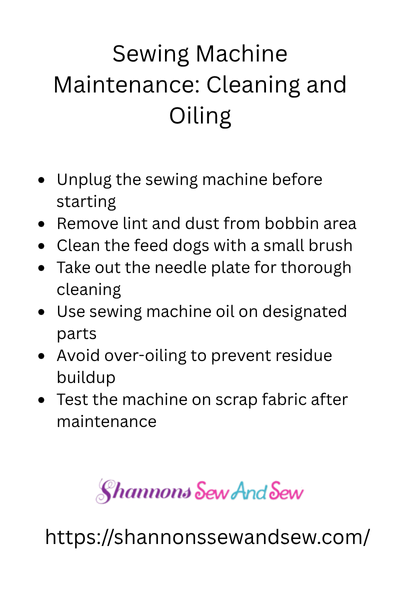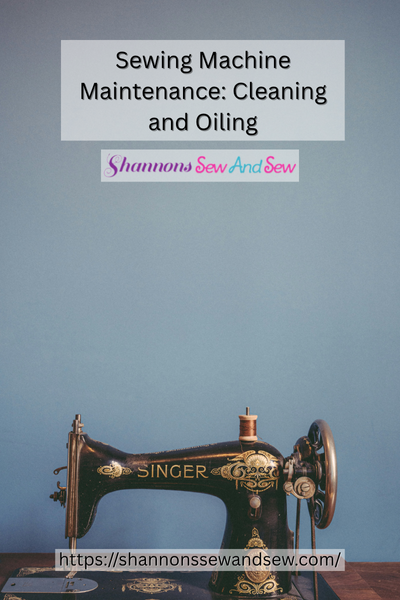Supplies And Equipment
Sewing Machine Maintenance: Cleaning and Oiling
When it comes to sewing machine maintenance: cleaning and oiling, you just can’t skip it—unless, of course, you enjoy jammed threads, weird clunks, and skipped stitches. (Spoiler alert: I don’t.)
So let’s talk about it. Not in a boring, textbook kind of way—but more like two sewing buddies chatting over coffee while you finally give your machine the TLC it’s been begging for. Trust me, it’s easier—and more satisfying—than it sounds.
Read More About Sewing Machine Maintenance: Cleaning and Oiling

The Day My Machine Gave Me the Silent Treatment
Quick story. A few months ago, I sat down to finish hemming a pair of jeans for a buddy. My machine, bless its overworked little motor, had other plans. The needle jerked, the bobbin thread tangled like spaghetti, and then… silence.
Dead silent.
Panic? Oh yeah. But after a quick investigation (which looked more like me poking around with tweezers and muttering under my breath), I realized the problem was simple—I hadn’t kept up with regular sewing machine maintenance: cleaning and oiling. It had totally slipped my mind. Oops.
That day, I promised my machine—and myself—I’d do better. And now I’m here to help you do the same.
More Things to Know About Sewing Machine Maintenance: Cleaning and Oiling

Why Cleaning and Oiling Matters (Like, A Lot)
Think of your sewing machine like a car. You wouldn’t drive 20,000 miles without an oil change, right? (I hope not.) Same goes for your machine. Every time you sew, tiny fibers, lint, and dust build up inside. It’s like your machine’s eating all your fabric scraps and choking on them.
Skipping this maintenance doesn’t just cause annoying problems—it can actually shorten your machine’s lifespan. And those things aren’t cheap to replace. A little routine care goes a long way in keeping everything running smooth and steady.
How Often Should You Clean and Oil Your Sewing Machine?
If you sew daily, you should clean and oil your machine once a week. For occasional sewing, once a month might be fine. But here’s my rule of thumb: if you start hearing funky noises or the stitches get loopy, it’s time.
Also, check your manual. (Yes, that thing.) Different machines have different needs. Some newer models even say “no oiling required”—but that usually just means they want you to bring it in for service instead. Sneaky, right?
Okay, Let’s Get into the Cleaning Bit
First off—unplug your machine. (I know, obvious, but hey… better safe than shocking yourself into next Tuesday.)
Then grab:
- A small brush (your machine probably came with one),
- A lint-free cloth,
- Tweezers (for those sneaky thread bits), and
- Maybe a vacuum with a tiny nozzle if you’re feeling fancy.
Open up the bobbin area, remove the needle and presser foot, and start brushing out all that gunk. Seriously—get in there. You’ll be surprised (and maybe a little grossed out) at what you find. Don’t use canned air, though. It just blows the lint deeper into places you don’t want it.
Now the Oiling Part—Yes, You Can Do This!
Once it’s squeaky clean, it’s time for oiling. Use only sewing machine oil—not WD-40 or cooking oil or anything else from your garage or kitchen, okay?
Place a tiny drop (I mean tiny—this isn’t a salad) on the metal parts where the manual tells you. Usually, that means around the hook race and maybe one or two spots inside the side panel. Don’t overdo it or your fabric will end up with greasy polka dots.
After oiling, turn the handwheel a few times, run a few scrap stitches, and you’re golden.
A Few Bonus Tips from My Sewing Adventures
Here’s what I’ve learned the hard way:
- Change your needle regularly. A dull needle can mess things up faster than you’d think.
- Keep your machine covered when not in use. Dust is sneaky.
- Don’t eat cookies over your sewing space (crumbs are a real threat).
- And never assume your machine “sounds fine” so it must be fine. That’s like ignoring a weird noise in your car until it won’t start.
Keep Your Sewing Machine Happy With Simple Maintenance
Keeping up with sewing machine maintenance might not be the most glamorous part of sewing, but it’s definitely one of the most important.
Think of it as a little bonding time between you and your trusty machine. You’re not just preventing problems—you’re making sure every project goes off without a hitch (or a hiss or a snap). And hey, it only takes about 10–15 minutes once you get the hang of it.
So the next time your machine makes a weird noise, don’t panic—just grab your oil, your brush, and give it a little love. It’ll love you back, promise.






















